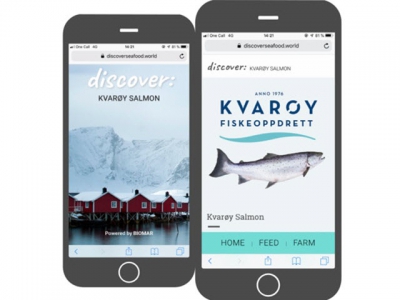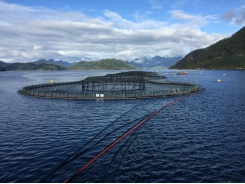New tool for seafood products that can stand scrutiny

Aquafeed company, BioMar, has launched a digital transparency tool, Discover, that potentially allows shoppers to scan an on-pack QR code to access precise information about the origins, sustainability and nutritional profile of seafood products.
In a world where people are bombarded with data on a daily basis, is a tool that provides yet more detailed product information warranted or wanted?
Vidar Gundersen, BioMar’s global sustainability director, told FeedNavigator that Discover had been developed precisely because consumers were approaching BioMar and asking for this information.
“They want to know more,” said Gundersen. “They realize that the seafood they are buying is ‘good’ but not everything they want to know is on the label. How can I be sure this fish comes from the location it claims and that it is the right species? What does this fish eat? These are the questions people are asking. We wanted to respond by providing a tool that would make this information more transparent.”
With BioMar’s new Discover tool, consumers can access information such as sustainability impact, nutritional profile, production location, certifications and feed ingredients.
Early adopter
The first aquaculture producer to adopt the tool is Kvarøy, which has been working closely with importer Blue Circle Foods, BioMar and retailer Whole Foods Market in a supply chain collaboration since 2016. The project has created a blueprint for more sustainably farmed seafood; salmon farmed by Kvarøy now has a fish-in:fish-out ratio of 0.47:1, thanks to continual improvements by BioMar to its In The Blue feed recipe. Discover can be seen as an extension of this project - giving retailers and consumers a window into how this fish is produced.
At present, Gundersen said that Kvarøy is using it as a business-to-business tool, giving its customers further up the supply chain access to this data. Ultimately, though, he said Kvarøy’s ambition is that retailers such as Whole Foods Market will include a QR code on pack, to inform consumers and in-store sales staff.
Beyond farmed salmon
Gundersen added that the scope of Discover is not limited to seafood produced under this joint venture or indeed to farmed salmon as a species.
“We have had a lot of interest from trout and salmon farmers in Norway, salmon farmers in Scotland, Chilean farmers of Pacific and Atlantic salmon and shrimp farmers in Ecuador. Buyers of seafood in the US and Europe also want to discuss how they can implement Discover.
“The tool can be applied to any species and any of our feed programs. The only requirement is that BioMar is the sole supplier of feed, otherwise we cannot guarantee the accuracy of the information.”
Back-end brains
One of the complexities of developing such a tool is that the data that feeds it is not static; feed recipes change and raw materials vary according to factors such as seasonality and supply fluctuations.
BioMar claims that Discover draws on several technologies and tools that are capable of calculating and calibrating huge pools of variable data to produce accurate and up-to-date information. For example, BioMar’s Sustainable Solution Steering methodology was adapted to evaluate every raw material in the company’s portfolio. This is combined with BioMar’s Eco-Efficiency tool, which is able to determine the environmental footprint of every feed recipe created by BioMar, including calculations on CO2 emissions, energy use and water use.
Có thể bạn quan tâm
Phần mềm

Phối trộn thức ăn chăn nuôi

Pha dung dịch thủy canh

Định mức cho tôm ăn

Phối trộn phân bón NPK

Xác định tỷ lệ tôm sống

Chuyển đổi đơn vị phân bón

Xác định công suất sục khí

Chuyển đổi đơn vị tôm

Tính diện tích nhà kính

Tính thể tích ao hồ




 Single-cell protein aquafeed ingredient first to gain GRAS…
Single-cell protein aquafeed ingredient first to gain GRAS…  It’s complicated – reviewing the use of essential…
It’s complicated – reviewing the use of essential…